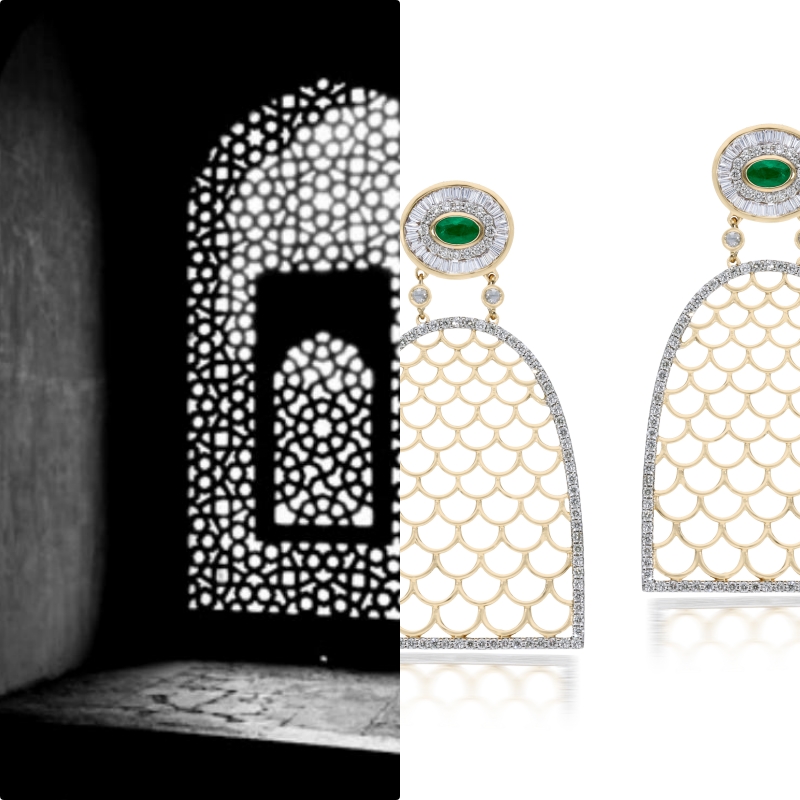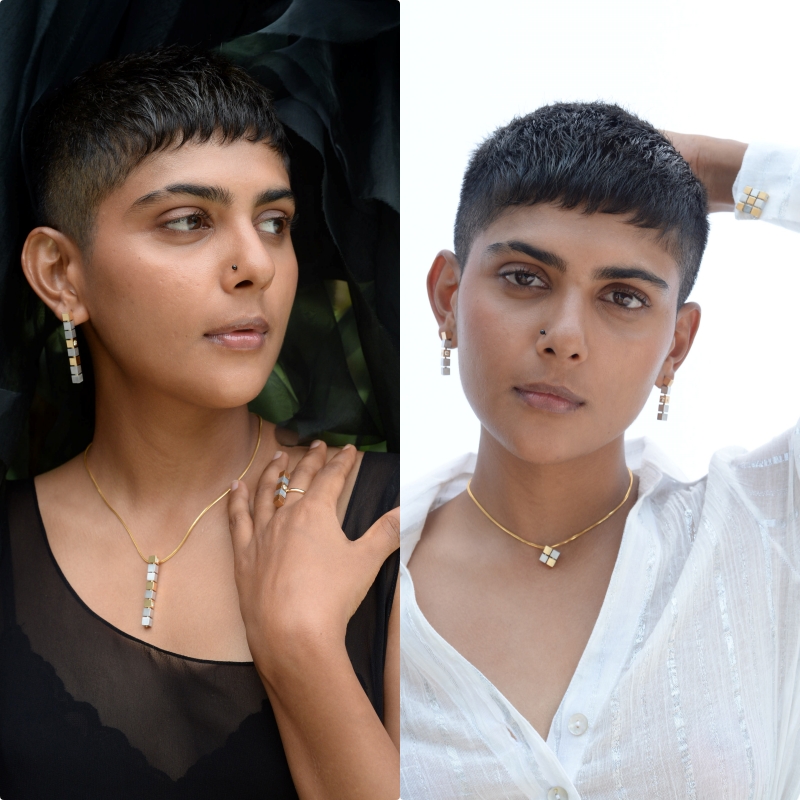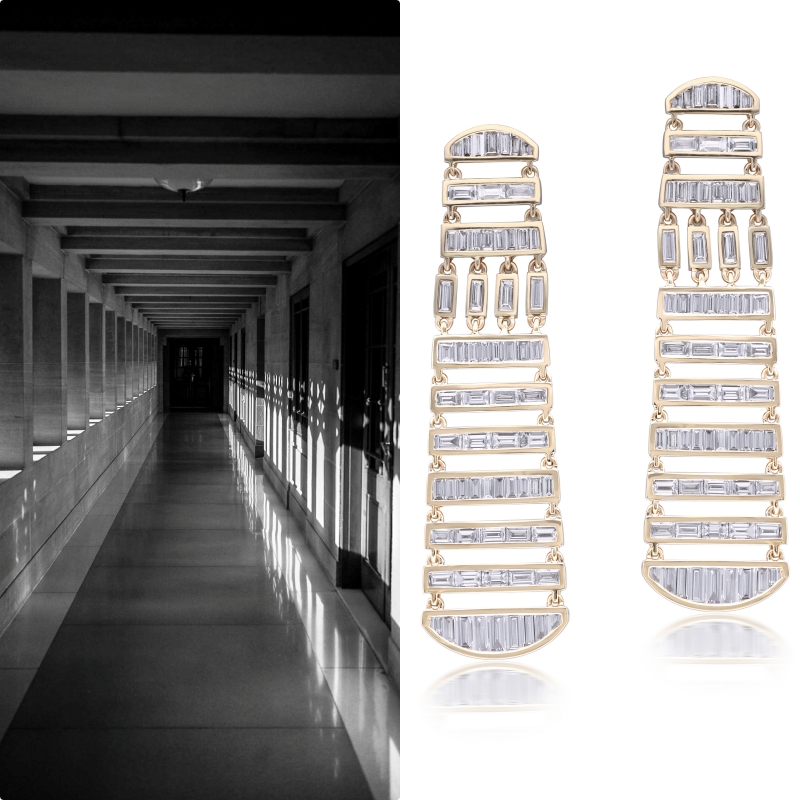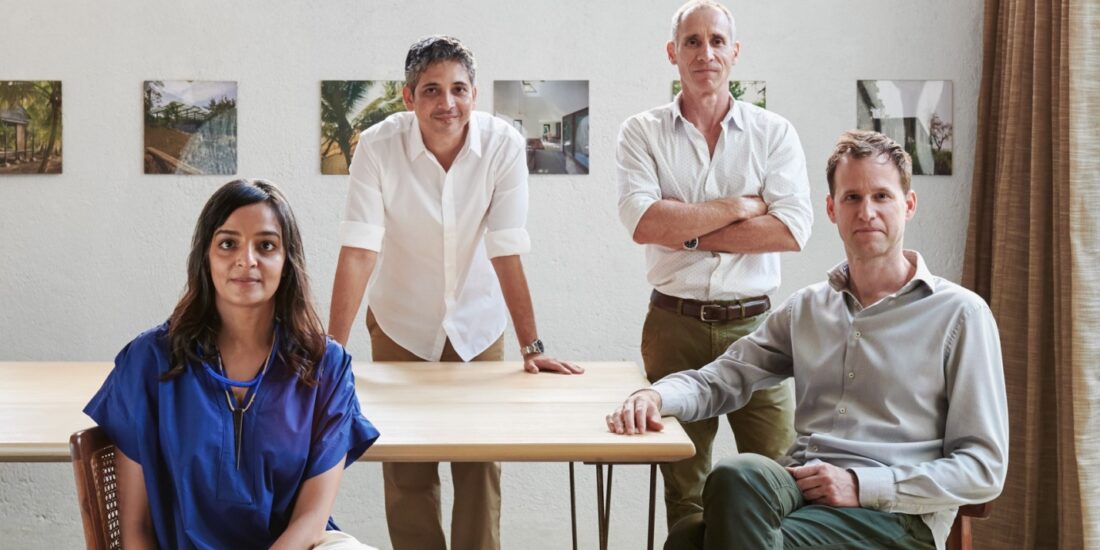Jewellery Bound by Architectural Overtones
Mumbai-based couture jewellery brand Moksh takes its cues from architecture and beauty of the country it is from while collaborating with designers to create stunning pieces of minimal jewellery that appeal to all generations.

Moksh takes its inspiration from architectural spaces, from palace passages, to the intricate patterns on tombs, mosques and other religious places, around India.
A couture jewellery brand from Mumbai unveiled a collection in the Americas that was made from recycled aluminium parts from airplanes, combining them artistically if minimally, with gold, diamonds, and gemstones. Titled Shourai (The Future, in Japanese) this collection by Moksh is in collaboration with Satyajit Vetoskar – architect, industrial designer and founder of Bandit (a sustainable design brand based in Goa). But that is not the only architectural link Moksh sustains in its designs. The most explicit reason behind its arty designs is the creator/owner, Milan Chokshi’s love for art and architecture combined with a passion for forms and sensuality of volume.

A fourth-generation jeweller, Milan Chokshi is currently at the helm of affairs at Tanvir Kumar & Co., his family’s 76-year-old business.In 2004, he set up the couture jewellery brand Moksh, which is now available at stores in select locations in the US, Australia, Hong Kong and India.
“There are a few factors that underpin the aesthetics of the travel and architecture inspired jewels at Moksh. The primary reason would be my love for travel and photography along with being in a country as rich as India. It was almost impossible not to be inspired by the plethora of cultural and architectural influences that one witnesses,” says Chokshi.

A Symphony Collection Sautoir with channel set ruby and diamond baguette drums, flexibly linked to make the chain of this lariat. Paired with a seed pearl tassel with ruby baguettes and round diamond detailing on its cap.
Prayer wheels reincarnated in a sautoir with seed pearl tassels that form the Symphony Collection; flexible long drop earrings that capture the beauty of negative spaces created in the play of light of the Nuur Collection; and ornate archway that finds expression in diamonds and gemstones flanked by an intricate pattern of pierced gold, are all examples of architectural inspirations transformed to pieces of brilliance.
Shourai by Moksh draws on minimalism and geometry for its design but the story behind its designs is rich in character and subtle in its choices. “Reclaimed aluminium from abandoned aircrafts sourced from a junkyard near Agra (India) are transformed into precisely machined cubes at a small machinist in Bangalore,” explains Chokshi. The humble aluminium cubes are then combined with gold and diamonds to create the stunning pieces in Shourai.
The second drop, SH 2.0, launched earlier this year is inspired by Japanese Shoji windows and abstract artworks by Dutch artist Piet Mondrian. It draws on Shourai’s core design philosophy and incorporates impure diamond cubes combined with blue topaz, copper, and gold. The SH2.0 design steers clear of the classic prong setting used for gemstones – pre-cut diamond cubes with predrilled holes enable each element to be affixed to the gold structure. The impure diamonds are essentially rejects that come in cubes of varied sizes. “We took these ‘rejects’ and gave them a new life,” explains Chokshi.
Moksh uses design and techniques to lure its customers. But for Chokshi, it is the jewel that ultimately guides the designs, “I would say finding the perfectly-tapered baguettes and setting them evenly, to allow the perfect reflection and lustre that is the most challenging technique for the brand.

Inspired by Humayun’s Tomb with its ornate archway which finds expression in diamonds and gemstones flanked by an intricate pattern of pierced gold.
The designs are all very intricate and detailed with minute trellis and patterns, with designs and the artistry are intricate. It takes the brand anywhere from 60 days to 120 days to design a statement piece such as a necklace with trellis details and patterns. The jewel passes through a minimum of 20 pairs of hands that are closely involved in its creation, according to the creator.
“Our clients are spread across the world,” according to Choksi and they are, “anyone who understands what fine jewellery really is and appreciates Indian forms interpreted in a modern and a contemporary fashion.






